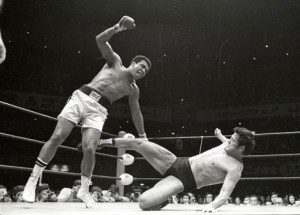Jun Okumura, at his blog, has a long five-part series deconstructing NYT Japan correspondent Norimitsu Onishi’s recent article Japan’s Outcasts Still Wait for Acceptance.
Part 1 Part 2 Part 3 Part 4 Part 5 (Coda)
Jun’s conclusions are, in short, that there were sufficient reasons other than his burakumin background to keep Nonaka Hiromu from the premiership, and that being of burakumin background in Japan’s parliamentary system is not as serious an impediment to advancement as being black (or presumably some other minority) has been in America’s presidential system. He makes a good case for both of these points, particularly his detailed explanation of Nonaka’s resume. And note what he is NOT saying. Jun does not argue that having a dowa (burakumin) background is NOT generally an impediment to advanvement, and he also isn’t arguing necessarily that Nonaka’s background wasn’t a factor in stifling his ascent. He is merely providing alternate, equally plausible explanations, and arguing that Onishi is jumping to conclusions in such a way as to exaggerate the contemporary importance of burakumin discrimination. But accepting that Jun’s substantial criticism and correction of Onishi’s article is at least substantially correct, I am still left wondering how much of a problem is this for the original reporting?
I sometimes feel that people are overly harsh on Norimitsu Onishi. Yes, many of the criticisms aimed at his reporting are accurate, but I think the “anti-Japanese” label often tossed around is insulting and inaccurate. Being critical of Japan (or any country) is hardly the same as being “anti” Japan, as long as the writer understands the difference between criticism and attack. And not just insulting to him, but to other people who care about the various issues he likes to cover. Of course it is also worth pointing out his biases, inaccuracies, and omissions in the manner that Jun Okumura did.
Bias in a foreign correspondent like Mr. Onishi is not inherently bad, if the primary influence that this bias has is on his choice of story, as long as the content within any given story is given the proper context and balance. Onishi clearly has a bias towards stories relating to the various types of underdogs in Japan, including ethnic (or perhaps quasi-ethnic in the case of Burakumin) minorities, rural poor, etc. and I think that to a certain extent his reporting does a good service in introducing these internationally little-known topics to the Times readership. For example, Time Magazine has had only two articles on the dowa problem, one in 1973 and one in 2001. The NYT has had quite a few more over the years, particularly in the mid 90s when Nicholas Kristof had what is now Onishi’s job. (Kristof, whose bias in selecting stories is at least a bit similar to Onishi, or for that matter myself, as a reporter columnist now concentrates more on child slavery.)
It definitely seems that Onishi’s stories are on topics the NYT editors and readers crave, and his stories are also on topics of real substance, and not the “wacky Japan” reportage that seems to be almost all that comes out of popular Western media outlets on this country. But a story on a well-chosen topic can of course still be flawed. Jun Okumura makes a good case that this one in particular is flawed, and you can find plenty of other criticism of Onishi online (although you may have a hard time finding similarly reasonable examples amid the sea of vitriol and bizarre accusations of being a secret Japan-hating Korean). This sort of criticism is an essential part of the new media landscape, in which blogs and other outlets police the competence and honesty of the mainstream media (and of course, each other) in the same way that the fourth estate it itself supposed to police the other institutions of society (the first through third estates, one supposes).
But I am also left with one lingering concern. Even if this criticism is accurate, how fair is it? Norimitsu Onishi certainly is not doing a perfect job, but is his work more or less flawed than similar foreign correspondents in other countries? Does a typical Times correspondent in Africa suffer the same level of criticism from Africa hands that Onishi does from Japan hands in America? I must admit I don’t pay much attention at all to coverage of the US in the Japanese media (although perhaps I should) but I certainly run across plenty of BBC stories on US culture or politics that strike me as substantially correct in some areas, but oddly twisted or lacking in much the same way that Onishi is being criticized here. And this is for a nearby country speaking the same language. I can only imagine how comically bad Russians or Brazilians consider American, or say Japanese, coverage of their country is. How good, really, is any foreign correspondence when limited to dispatches of 750-2000 words for an audience expected to have almost no background knowledge on the subject? In fora such as Jun’s blog or this one readers can safely be assumed to be bringing quite a lot more background information to the table than in a newspaper, and that may at times lead us to view mainstream media work in a worse light then they actually deserve. Of course they do sometimes deserve it. Actual errors or deliberate misdirection cannot be excused or relativized away and should always be pointed out when they occur, but let’s at least think a little more about how much of the problem is found in any particular reporter and how much is inherent in the whole institution.







